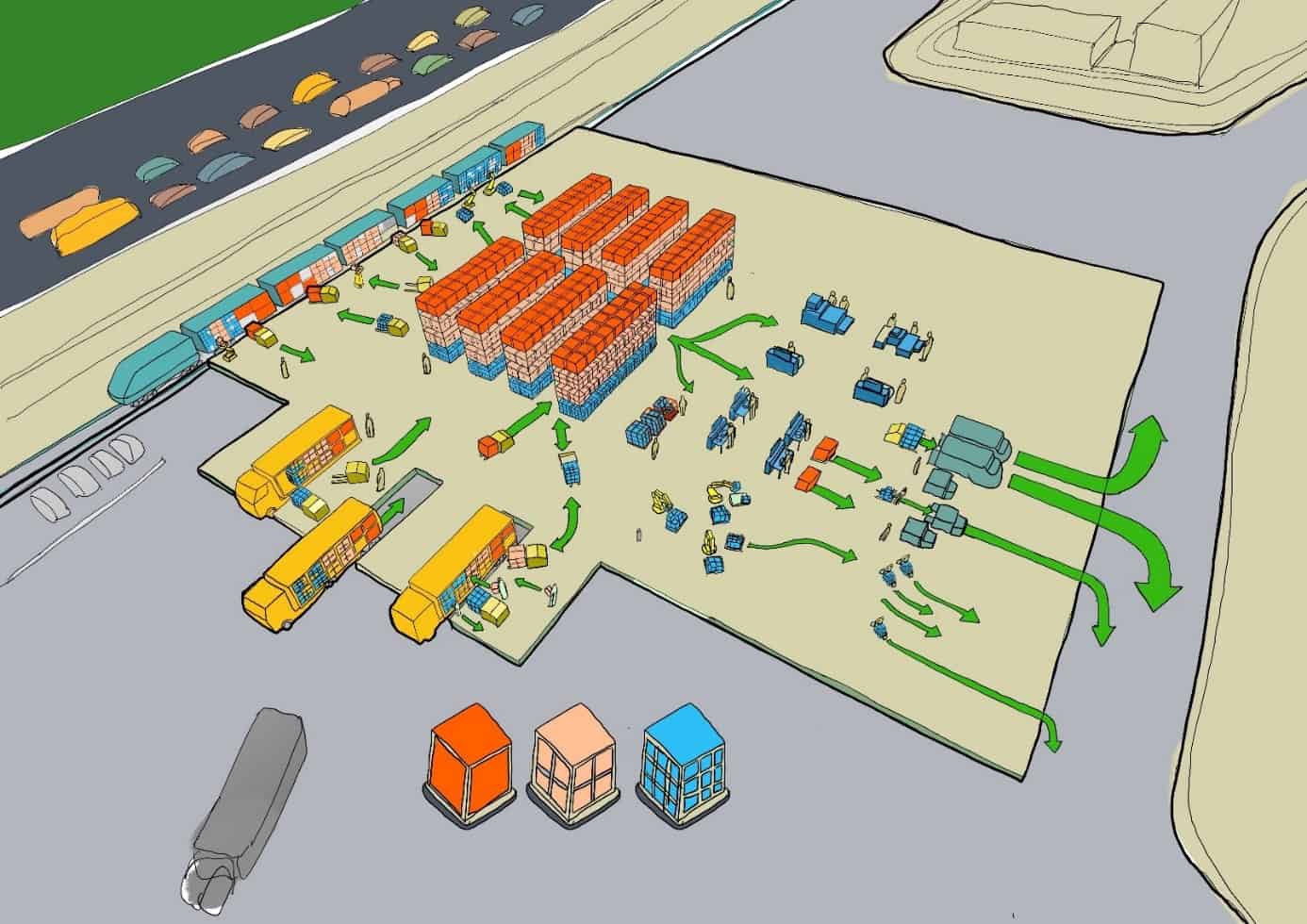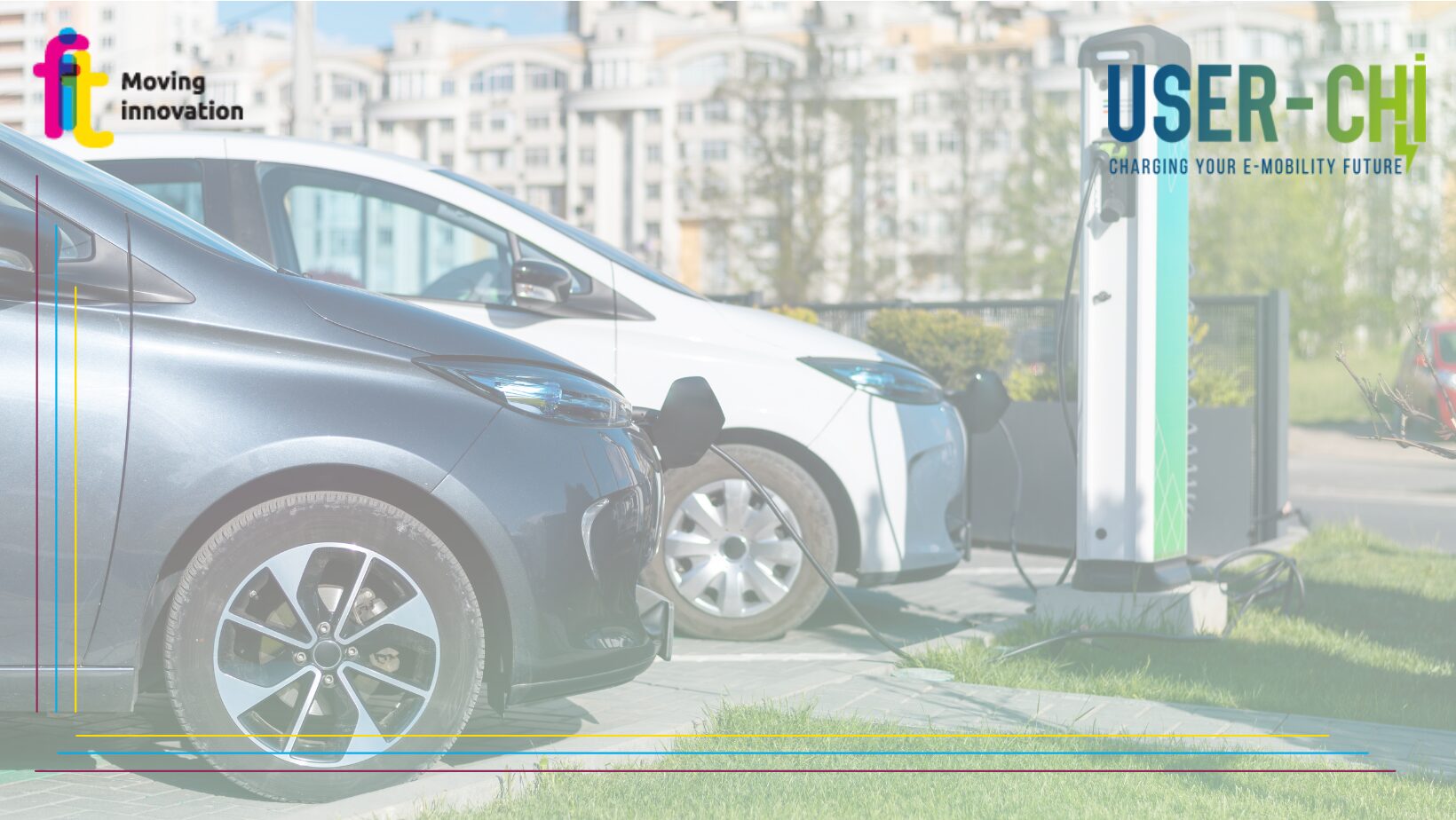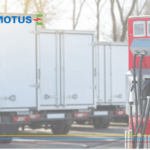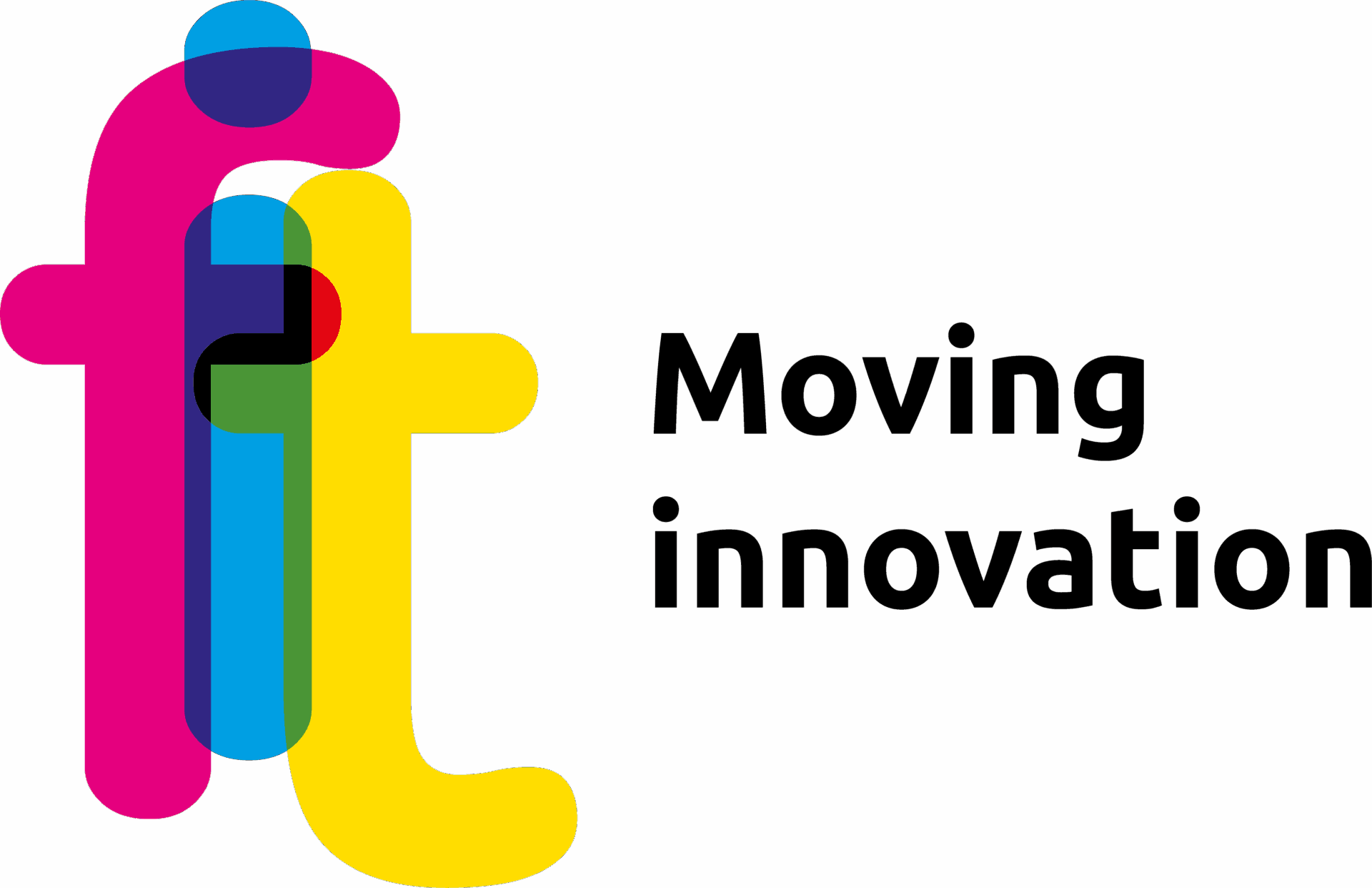In our previous article we presented the stages of a new path that is making headway in the world of logistics and goods transport: the Physical Internet. At the moment it is only a vision that aims to create a global system of transport and distribution of goods similar to the one we are used to for sharing information, the digital Internet. The Physical Internet aims to improve the sustainability and efficiency of freight transport, through a fusion of logistics networks, just as the Internet has done with digital networks.
Environment and economy: an unbalanced system
Taking a step back, let’s try to understand what a global system for the transport of goods is for. Emissions generated by the freight sector are continuously increasing and are currently estimated to be the second main cause of climate change; in particular in the last mile and in urban distribution, the changes in habits generated by the spread of e-commerce and new technologies have led to an increase in traffic and emissions that traditional pollution containment measures (less polluting vehicles and localized optimization measures) are no longer able to cope. Environmental aspects are not the only reason to rethink the entire goods transport and distribution system: operational and economic issues also play in favor of a push for the renewal of the entire sector: in fact, there is ample margin for optimization in the use of infrastructures which, unlike the digital Internet, are highly underused or unbalanced: the intensity of use of road infrastructures is for example 25.3 million tonne-kilometres for each kilometer of network while on the railway this measure is stuck at 1 .7 million; all this also has an impact on the movements of people who must necessarily share the same spaces and infrastructures with goods transport whose demand is constantly growing.
A global logistics network
To explain the concept of the Physical Internet it is useful to use the analogy with the digital Internet: when we send an email, from our computer or smartphone, we just have to write the message, identify the recipient and press the send button , without worrying about where we or our recipient are or what device we are sending the email with; we just need to be connected to the Internet. The Physical Internet has the ambition of developing a similar model, in which by imagining replacing our e-mail with any object to be sent, each of us will be able to access a global logistics network that will take care of delivering this object regardless of the point source or destination, size and routing requirements. To achieve this objective, initiatives related to the Physical Internet aim to design a series of conceptual foundations similar to the digital Internet:
- the physical encapsulation of objects in standardized modules capable of being combined, minimizing empty spaces and managed uniformly by any handling and storage system, be it in a port, in a railway warehouse or in any warehouse;
- the digital encapsulation of information, i.e. a standardization of communication protocols in a unified format in which information relating to routing, storage, movement or other are nested inside each other and extracted by the subject of the logistics chain required to read only their own part of the information in relation at its hierarchical level in the architecture of the Physical Internet.
The world wide web of goods
Once these levels of standardization have been achieved, it will be possible to reorganize the current logistics chains into networks that will be able to talk to each other, thus creating complex and extremely extensive structures, the so-called multi-networks, or “networks of logistics networks”: in our analogy the world wide web of goods. The first of the following figures shows a connection of three logistics networks (i.e. logistics chains managed by three different operators) which is combined in different ways depending on whether pallets, containers or frozen goods need to be shipped (second, third and fourth figure respectively), thus optimizing the various shipments according to the peculiarities of the goods and their respective routes.
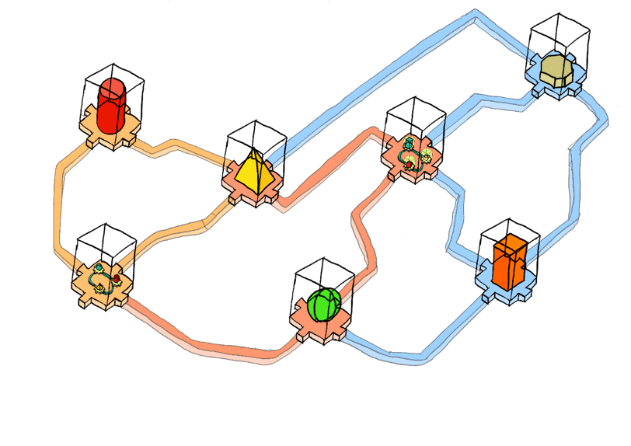
Network of three different logistics networks
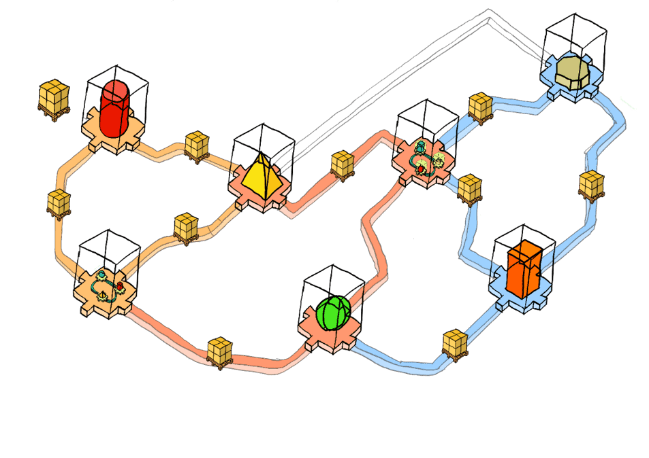
Physical Internet network for pallet transport
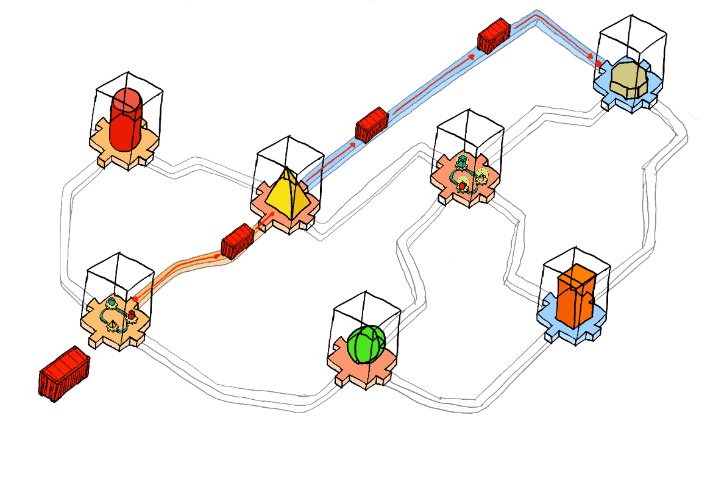
Physical Internet network for container transport
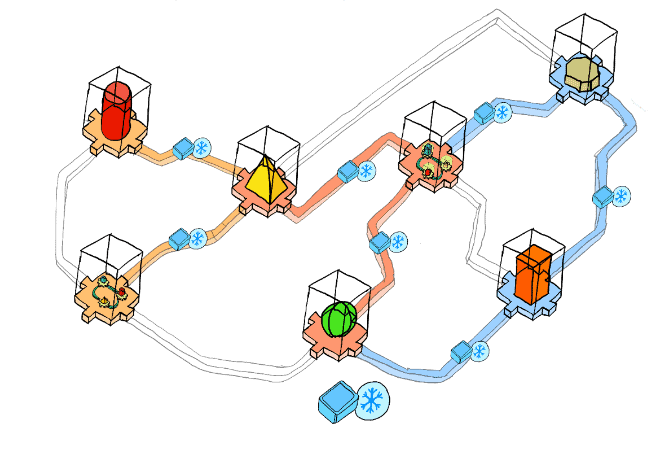
Physical Internet network for frozen food transport
Creating such a complex architecture and migrating the multitude of infrastructures, processes and services that revolve around the world of logistics towards new models and procedures is a titanic undertaking that an ever-growing group of willing companies has decided to undertake.
FIT Consulting and the SENSE project
The SENSE research project, funded under the European Horizon 2020 programme, is an initiative that has the ambition of defining a far-reaching roadmap by launching a series of project actions so that this visionary idea can become reality by 2050. FIT Consulting, in addition to contributing to the definition of the conceptual elements of the Physical Internet, is engaged in this project in the observation of the logistics startup market to try to understand which of these are most similar to the new global vision of the logistics system, thus drawing inspiration from it in definition of the roadmap and conversely to pave the way for entrepreneurial developments in line with the innovations expected in the coming years.

